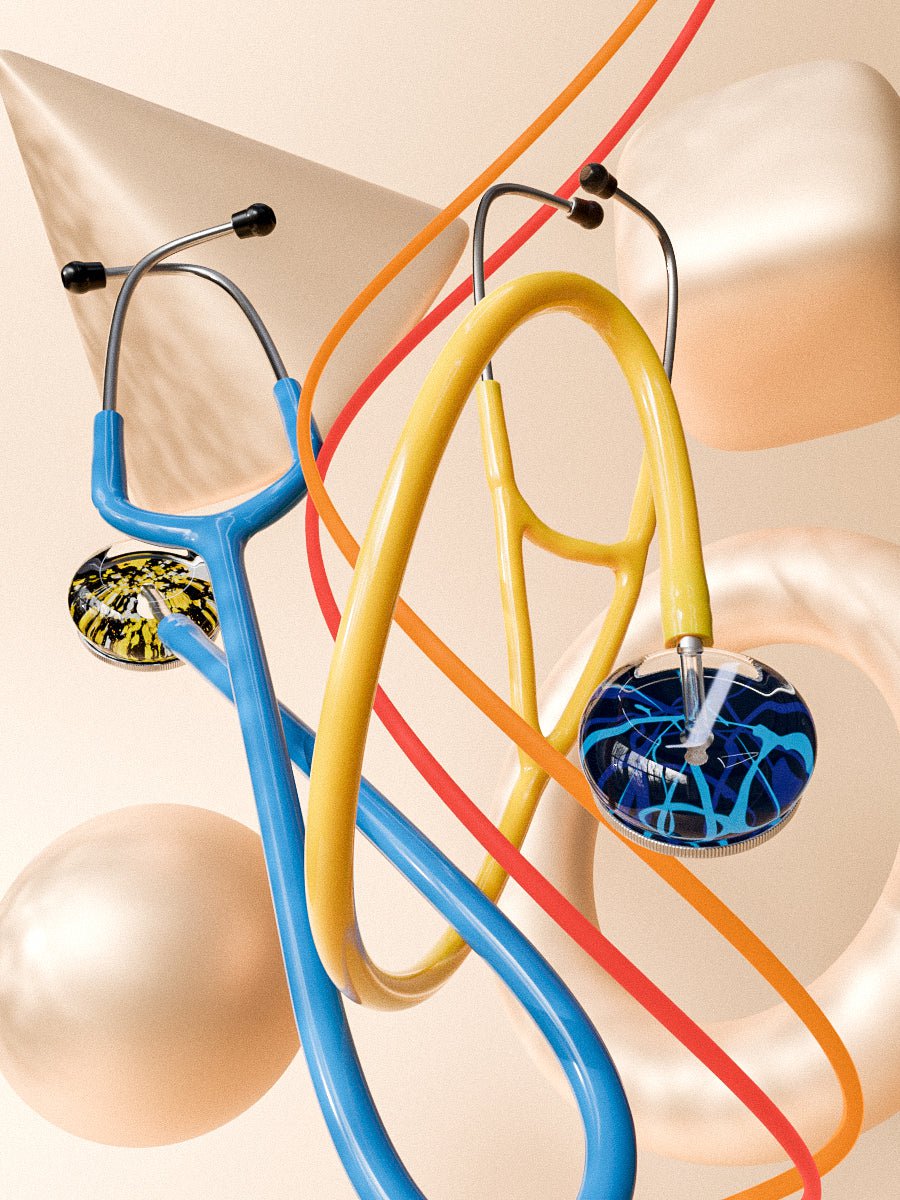What does bronchitis sound like with a stethoscope? What is the difference between bronchitis and pneumonia? Do doctors use a stethoscope alone to diagnose these lung infections, or do they need other tests too? These are some of the questions that we will be answering in this blog post. We'll start by explaining what bronchitis sounds like with a stethoscope. Next, we'll go over how it's treated and what other lung infections can be heard on the lungs using a stethoscope. Finally, we'll talk about diagnosing these conditions without an instrument.
What is Bronchitis?
Bronchitis is an infection that affects your airway passages of the lungs. It's caused by bacteria or viruses that enter through breathing in (inhaling) respiratory droplets from an infected person.
What does bronchitis sound like when using a stethoscope?
Bronchitis sounds like a higher pitched wheezing that seems to come from the back of your chest. If you're listening, it's as if someone is blowing air through an empty pipe or straw with their lips pursed tightly.
Can bronchitis be diagnosed with the use of a stethoscope alone?
No, there are many other tests that need to be conducted alongside a stethoscope. There is no single test that can diagnose bronchitis alone, and the diagnosis comes from taking into account all of the signs and symptoms (such as chest x-rays) in conjunction with each other.
How do doctors treat those who have been diagnosed with bronchitis?
Doctors treat bronchitis by using antibiotics.
What other lung infections can be determined with a stethoscope?
There are many different types of lung infection that may present themselves when listening to the lungs through an instrument such as a stethoscope. The most common of these is pneumonia, which sounds more like wet crackles and gurgling.
Other types of lung infection that may be heard through a stethoscope are tuberculosis, which makes a "snuffling" sound and could also produce coughing; bronchiolitis (an inflammation in the small tubes branching off from the main airways), which will cause wheezing sounds when listening for breathing out of one side of the chest or the absence of breathing out of one side altogether; and bronchiectasis (a chronic condition in which a large amount of mucus has accumulated in the lungs), which will sound like prolonged inspiratory sounds.
Other times, there may be no abnormal noises heard through listening with a stethoscope as it is not designed to detect these types of lung infections without additional testing such as chest X-rays.
Why Diagnosing Lung Infection With a Stethoscope Alone is Not Possible:
Bronchitis, as well as other lung diseases that can be diagnosed with a stethoscope alone, are typically accompanied by symptoms such as fever and cough which will help to make the diagnosis clearer. In some cases, these accompanying symptoms may be the only way for a doctor to determine a diagnosis.
How Doctors Diagnose Bronchitis:
Doctors will typically do an analysis of symptoms, physical exam and other tests such as chest X-rays in order to make this determination. A stethoscope can help with a differential diagnosis by identifying some possible causes but is not sufficient for a diagnosis.
How long does it take to treat bronchitis with antibiotics?
It varies by patient and treatment. Generally, the medications are usually prescribed for five to ten days.
How can patients identify other lung infections?
Amongst a variety of symptoms that may be present with an infection such as pneumonia or bronchitis, fever is one strong indicator of possible causes of these illnesses. Coughing up blood, wheezing and chest pain are also common symptoms.
What are the most common illnesses that can be heard with a stethoscope?
Pneumonia is an infection of the lungs that can be identified with a stethoscope.
Who should get treatment for pneumonia?
It's important to seek medical attention if you have symptoms such as fever, cough and chest pain. Pneumonia often requires hospitalization for intensive care in order to receive antibiotics intravenously and oxygen therapy.
How long does treatment last?
Treatment generally lasts for at least two weeks, but may be as long as three to four months. Treatment with oral antibiotics should continue for a certain amount of time after discharge from the hospital or until all symptoms are gone.
How to use a stethoscope to listen to the lungs?
Listen to the chest with a stethoscope for noises that could be anything from crackling sounds (rales) to wheezing, which may indicate asthma or bronchitis.
What are clues of how serious pneumonia is?
Pneumonia can get worse quickly in patients who have other health problems such as heart disease, diabetes, or chronic obstructive pulmonary disease (COPD) and it can be life-threatening.
When it comes to listening for bronchitis or Pneumonia with a stethoscope. Only qualified physicians should diagnose based on what is heard. Often it is hard to distinguish between the different types of infection with the use of a stethoscope alone due to the similarities in sound that is heard while using the stethoscope.
If you or a loved one is experiencing chest pain, fever, cough, or difficulty breathing it is advised to seek medical attention right away. Both bronchitis and Pneumonia can get worse quickly if left untreated.
The use of antibiotics can usually have a patient feeling better within a few days to a week. Sometimes if the infection is bad enough hospitalization is required to administer antibiotics intravenously. Even once your symptoms have dissipated it is important to finish your entire round of antibiotics to prevent a relapse in infection occurring.





